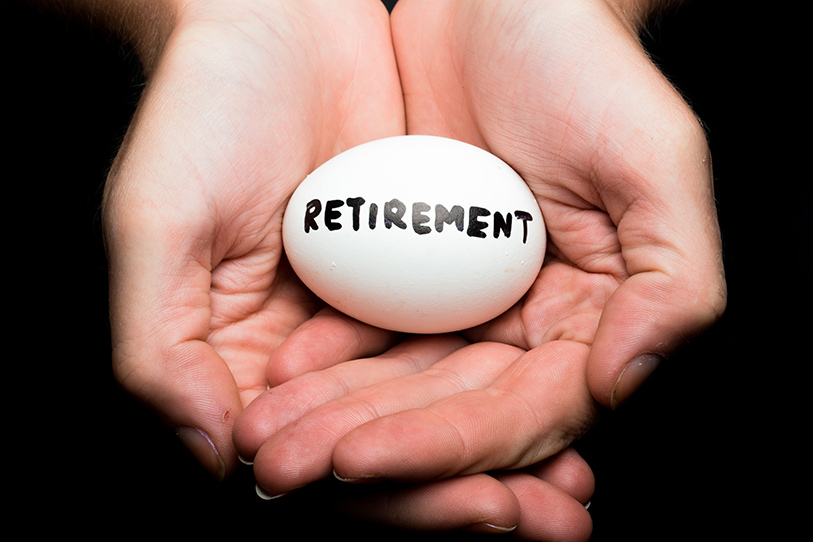Right now, Australia’s superannuation system is valued at about 2 trillion dollars. It’s the primary safety net for millions of Australians, yet many don’t know what exactly their super is doing, or how to use it to build a better nest egg for retirement.
Why do you need to build a better retirement nest egg?
Over the last few decades Australians have been living longer, the cost of living has increased, and many are retiring later so they have enough money to enjoy their future. Conversely, the government continues to moderate spending on pensions and aged care benefits. These two broad factors are creating pressure on people of all ages to plan and create a better nest egg for retirement.
Recent Australian Bureau of Statistics data found that around 47% of currently retired Australians rely on a government pension as a main source of income. NAB, meanwhile, reported that over 66% of Australians feel they are unprepared for retirement. If you’re one of those 66% then taking control of your investments can help alleviate uncertainty and build a better retirement nest egg.
Invest more income into your superannuation fund
A simple tip for capitalising on your superannuation is to salary sacrifice or invest more super into your superannuation account. Currently, the government requires your employer to invest at least 9.5% of your earnings into a superannuation fund. However you can add additional contributions to your super to help prepare for the long term, there’s even some tax advantages to doing so.
If you are under 50, you can invest up to $30,000 into your superannuation account at a tax rate of only 15%, similarly, if you are over 50 that threshold bumps up to $35,000. If you’re already paying a high marginal tax rate then this a great option to save some of that money for a rainy day.
However, as there are legislated changes commencing from 1 July 2017 that will reduce the general concessional contributions cap threshold to $25,000, it is important to note that the description above applies to the 2016/2017 financial year only. Along with this, over-50s cap of $35,000 will be removed entirely from 1 July 2017.
Consolidate your super
If you’ve worked for a number of employers and didn’t nominate your own super fund during your your employment, then it’s likely you have superannuation floating around unclaimed in any number of funds. Consolidating your super can add thousands to your current fund while giving you more control over your future.
Finding lost super isn’t actually that difficult, but you will need need your Tax File Number (TFN). Find more information about claiming unpaid super at the ATO website.
Know how much you need for your future
Just because you’re retired doesn’t mean you won’t want to enjoy life. How much will retirement cost you, and are you prepared to fund a comfortable or even modest retirement?
The Australian Securities and Investments Commission has a handy table that helps estimate the costs for single retirees and couples. Assuming you own your own home and live to your mid 80s they estimate the costs for:
- Modest living:
- As a couple: $34,560
- Single: $23,996
- Comfortable living:
- As a couple: $59,619
- As a single: $43,372
While the aged pension can help support your retirement, there’s no guarantee that it will provide enough in the future for a modest retirement.
Find a fund that works for you
There are many different types of super funds, some better than others. Many bundle life insurance and other fees into the package and aren’t always transparent about what fees are going where. The Sydney Morning Herald reports that Australians pay $21 billion in fees to super funds every year. That doesn’t mean you should go with the fund with the least amount of fees, but you should bear some consideration about the pros and cons of various super funds rather than just settling for the default fund offered by your employee.
Look for stability
Super funds that have a good history of stability make good candidates for investing your superannuation. Some funds that show high gains one year might not have the legs to go the distance, and there’s also a chance they’ll raise their fees to capitalise on recent success.
You’ll want to look at the last 3 years of the fund’s performance. While it might not be a measure of future success, it does show you whether the fund has been able to meet targets and grow its portfolio in a measureable method.
Take control of your super with a Self Managed Super Fund
SMSFs give you the flexibility to choose where to invest your superannuation. While they can attract higher fees that a normal super fund, the rewards can be reaped earlier. Currently, you can have up to four members on your own SMSF, allowing you to build a diverse portfolio of assets and investments to secure your future.
Think about your legacy
Building a retirement nest egg might represent only part of your long term financial goals. Beyond your own comfort and happiness in retirement, there’s also what you build for your children and your legacy to consider.
Creating wealth for your family can add another layer of complications to your investment choices. You’ll want to make sure there’s something there for your children, but also retain control over how the funds and assets are used until you’re ready for them to take ownership. Thinking long term, diversifying your portfolio to mitigate risk and properly protect your wealth in a trust are all important considerations when building wealth for your family legacy.
Consult an investment advisor
Financial planners can help you untangle the complex rules and options involved in superannuation investment and assess your potential position when it comes to retirement. Talk to a professional and secure your future today. It’s never too early to start building your retirement.


